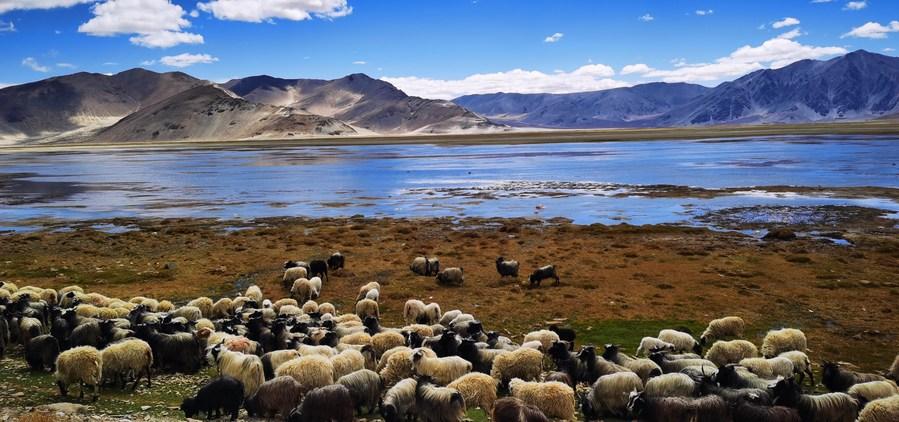Study reveals ecological mechanism of shrub effects on Qinghai-Tibet Plateau

Cellphone photo taken on May 13, 2021 shows grassland by the lake in Dinggye County, southwest China's Tibet Autonomous Region. (Xinhua/Shen Hongbing)
LANZHOU, April 4 (Xinhua) -- Chinese researchers have revealed the ecological mechanism of shrub effects on the Qinghai-Tibet Plateau by investigating the functional diversity of belowground communities.
The study advances the understanding of global climate change on nematode communities on the Qinghai-Tibet Plateau, said Xiao Sa, a professor with the College of Ecology of Lanzhou University and the study leader.
Land use and climate change are altering biodiversity patterns and ecosystem functioning globally, with shrub encroachment a major concern.
The study team conducted a large-scale survey and sampling of plant and soil samples from inside and outside the shrubs of dominant shrubs at 31 widely-distributed shrub sites on the Qinghai-Tibet Plateau.
Researchers collected functional traits and calculated the alpha and beta diversity of nematode communities.
The study results showed that shrubs did not significantly alter the functional richness and dispersion but significantly decreased the functional beta diversity of nematode communities in a pattern of functional homogenization on the Qinghai-Tibet Plateau.
The study provides a new theoretical basis for further understanding of changes in biodiversity and ecosystem functions on the plateau.
The study results appeared in the journal Global Change Biology.
